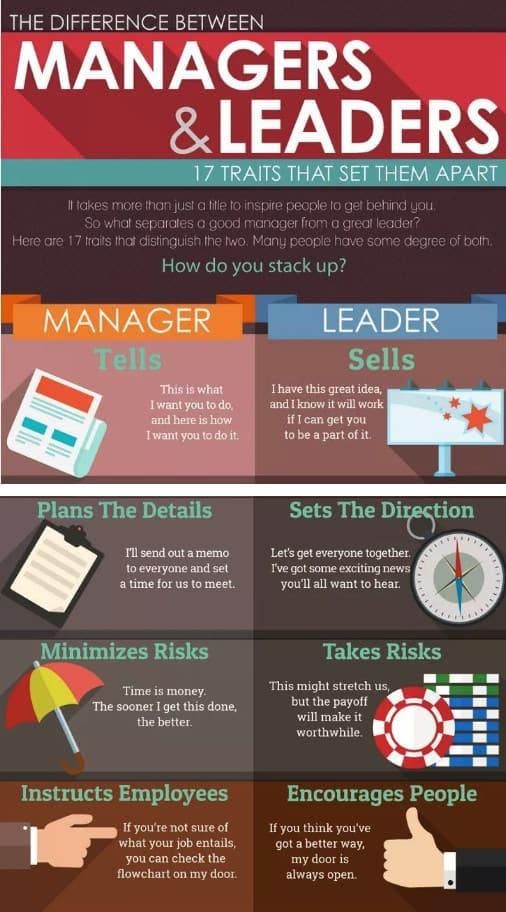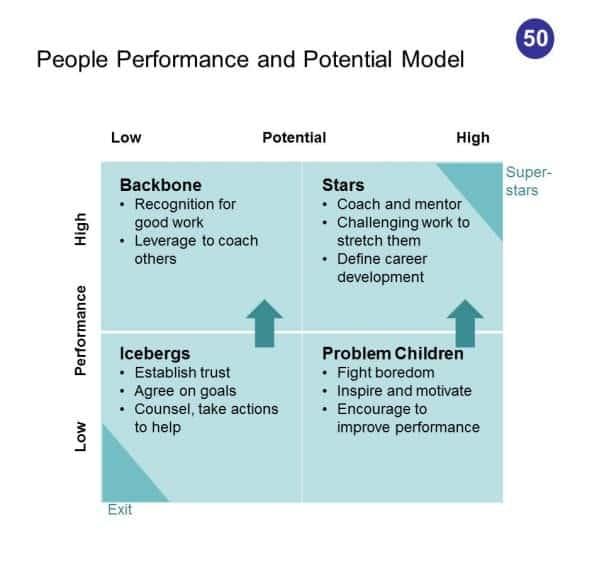Leading a high-performance marketing team is harder than ever. Between systems, processes, and proving ROI, teams and their leaders struggle to meet expectations, hit objectives, and stay focused in an ever-changing online world.
But there's also never been a more dynamic and exciting time to lead a marketing team.
As a CMO who values radical transparency across the organization, I’m always in search of a better way to wrangle efficiency and ensure success.
That's where actionable insights, a synced team working in flow, and a clear view of the future come in to play.
In this article, you'll learn everything you need to know to lead a team to greatness.
1. Move out of a manager mindset
A couple of years ago, I had the chance to meet fellow speaker, Kim Scott at Hubspot’s massive Inbound Marketing event.
As a fan of Kim’s, I was quick to introduce myself and share what an impact her article on First Round, “The Surprising Secret to Being a Good Boss,” (and subsequent video) made on me, my team, and the company.
She made “radical candor” a frequently used term and one that we’ve wholeheartedly embraced.

Problem was, not everyone in leadership initially jumped on board. It quickly became apparent why: the difference was the manager vs. leader mindset.
Those comfortable with radical candor were leading, inspiring, and encouraging their team. Those uneasy about too much transparency and unfiltered feedback were the managers. They were the ones creating plans, objectives, and strategies to manage the outcome.
Now don't get me wrong, there's nothing wrong with being a manager. I think back to one of my first jobs as a kid at Baskin Robbins here in Southern California. My manager was awesome. She was funny, easy to get along with, and worked hard to build the team.
But did she inspire me to follow her vision? Did she make me want to start my own successful ice cream business? Nope.
Let me explain why with a quick definition of a manager vs. a leader.
Halelly Azulay, founder and CEO of TalentGrow LLC and author of Employee Development on a Shoestring, puts it this way:
Leaders attract a following who believe in their vision, while managers have people who do work for them without necessarily any intrinsic buy-in to a particular vision.

As a marketing leader, you want buy-in. You want your marketing team to feel connected on a deeply personal level to what you're building, creating, and putting out into the world.
Because the alternative creates a situation we've all been in.
A manager who barks orders without clearly set expectations, and refuses to walk alongside the team, doing the actual work.
As someone leading a marketing team, if you don't have the back of your team, you will have unease within the ranks. And where there's unease, there's tension that eventually translates into a breakdown of trust.
Losing that is a nail in the coffin of your marketing team.
Not only will it kill your effectiveness as a team, but the congruency in how you work together.
That's where balance comes in. As a leader, you must keep your team future-focused, customer-centric, and with a finger on the pulse of your ever-changing industry.
So before you brazenly embrace radical candor, first embrace a mindset shift. Move from manager to leader. Your team will thank you for it.
2. Create a clear path of communication
Great marketing teams have open lines of communication. That's because great leaders connect on an emotional level.
By doing this, they're able to better navigate "The Five Dysfunctions of a Team" as outlined by Patrick Lencioni.
- Inattention to results
- Avoidance of accountability
- Lack of commitment
- Fear of conflict
- Absence of trust
Each one of those leads back to one key leadership area: how you communicate.

But as someone who oversees a team in 9 different countries, I know firsthand that communication, especially face-to-face is a challenge.
That's where a clear path of communication that offers insight without ambiguity is critical.
A few years ago, we made the transition out of Skype (yikes!) and into Slack. It wasn't an easy uproot, but an extremely necessary one.
Skype was no way to communicate efficiently and led to a lot of confusion, broken processes, and missed deadlines.
To eliminate these challenges, we formed Slack channels specific to each aspect of the company, including ongoing functions. This in and of itself creates all new challenges, like how to manage an onslaught of chatter.
That's why it's so important to keep everyone in the appropriate channels. For example, if you're working on a campaign that doesn't need your design team involved from beginning to end, keep them out of the channel.
Now while I'd like to believe that everyone can manage their day, Slack puts even the most productive of people to the test. Those shiny notifications that scream, "look at me now," can be a major distraction.
This moves me to the next required tool: a project manager.
Atlassian's JIRA is our system of choice for project management and daily accountability. We follow a lean approach and work in weekly Sprints. Not familiar with it? It's an easier way to plan, develop, and deliver your marketing campaigns.
It took some thoughtful reverse-engineering of our product Sprints, but once we found our groove, the marketing team was able to move fast and in tandem.
To get started with each aspect of this communication process, identify:
- Your daily communication workflow: Get out of your antiquated system (or worse... email) and create an interactive online environment. Whether you have a remote team or one sitting within a brick and mortar, congregating in offices and around the water cooler is a waste of time and resources.
- Your project management process: Wrap your arms around every moving piece within your marketing department. Begin with high-level buckets and then outline what falls within those buckets. For example, one bucket might be content marketing. List everything your team does that would fall under that topic. It's a time-consuming project initially, but this will give you the ability to break each aspect down into weekly Sprints.
One last thought on how you handle internal communication:
If you have a product that's managed by an engineering team, an improved communication and management process will flow into your product or feature announcements. No more last-minute launches!
Better communication equals happier customers and team members.
3. Embrace accountability
Accountability is a critical aspect of any successful marketing team. Think about it...
When accountability is allowed to deteriorate or is non-existent, clarity is lost and bad habits creep in.
When you consider that it takes up to 2 months to form a new habit, allowing bad habits to take root is like chucking time and money out the window.
That's why we implemented the people, performance, potential model. The beauty is in its simplicity. You're working together as a team to hold everyone within the organization accountable.
During the review process, you'll identify the:
- Backbones of your organization (high performers but typically not your innovators)
- Superstars (high performers looking to excel)
- Icebergs (low performers and often stuck in their old ways)
- Problem children (low performers with high potential)

Since the entire team is involved in this type of a performance assessment, be prepared to manage emotions.
I remember our first “no holds barred” marketing team performance reviews. I worried that there would be a lot of finger-pointing and blaming. Instead, after a full day of “People, Performance, Potential Reviews,” the feedback was unanimous.
The team found that the radical candor test we'd run (the one I mentioned above) was a roaring success. They'd learned how to communicate openly in a transparent and compassionate way.
Sure, I could huff and puff that it was successful because each leader had proven they truly cared about the team, but it was more than that.
Our performance model was a success because the team had embraced the mission, vision, and values of the company.
They'd learned how to take each one and incorporate it into every interaction. As a leader, your goal is to do the same. Help them support, promote, and rally around each other.
A team with healthy communication skills fosters a happy work environment.
4. Focus on the metrics that matter
Think about the last time you took part in a marketing meeting that quickly devolved into a never-ending debate. Those meetings have no place in today's fast-paced online world.
Today, you must be able to organize efficient meetings, track your KPI’s, and stay focused on the metrics that matter most.
Without it, you have a team chasing targets they don't understand and a goal line that's out of everyone's reach. In general, your team is one hot mess.
97% of employees and executives believe lack of alignment within a team impacts the outcome of a task or project.
Now consider the upside to clearly aligned goals.
Your team is documenting as you go, making iterative adjustments, following a defined plan, and staying the course without getting caught up in wild or broad assumptions.
So what are those metrics? That will depend on your company and goal. It could be everything from customer acquisition cost (CAC) to sales qualified leads (SQL), customer value, and/or sales revenue.
For our team, we track all of the above and then some.
An example of marketing goals could look like this. You'll start with a high-level objective and then follow it with key results.
If you're not familiar with OKRs, I talked about it in this post.
OBJECTIVE: Improve CTA conversion on Activation Stage Blog Posts
Now add your key results. They'd look something like this:
Increase addition of new contacts into marketing campaigns in Q1 by 35%. Increase social engagement by 20% across all social channels.
What you'll learn through this process is the who, what, and why of each metric you're tracking.

For your team, determining what those metrics are will make you proactive instead of reactive. You'll track what matters, including analysis, events, and real-time data. This avoids the disconnect I see among teams all too often.
It also gives you clarity. As opposed to perception or gut reactions, you're making decisions grounded in data and mapping your collective performance.
This facilitates honest conversations to ensure everyone understands their role and value within the company and team.
Final thoughts
If you’ve been struggling to align and lead your marketing team, take a deep breath. The leader within you is ready to emerge, but the process takes time.
When you commit to testing and implementing a few of the ideas above, you'll not only grow as a leader, but as a team.
And as you build confidence, so will your team. Confidence breeds trust and trust is the deciding factor between a team that sticks together and one that ultimately falls apart.
Keep pushing, keep doing, keep learning, stay the course.
About Rebekah Radice
Rebekah Radice, co-founder of BRIL.LA, has traded narcissism for purpose. When not driving growth, you'll find her tricking family into thinking she's Emeril Lagasse - likely covered in marinara. The spotlight was fun, but impact is better. These days she's using 20+ years of brand brilliance for good.
